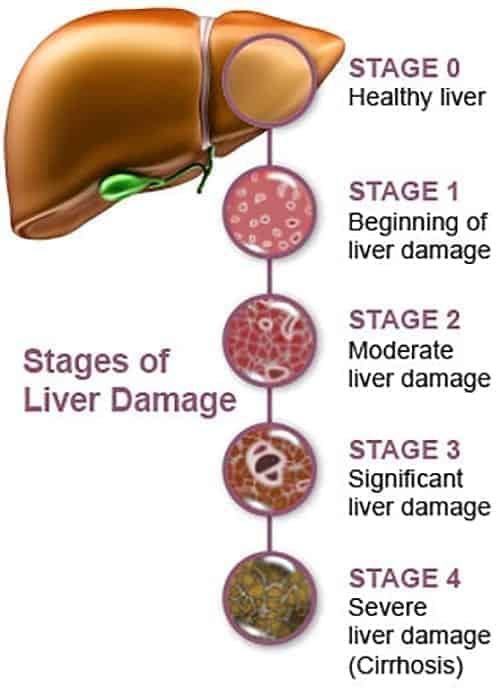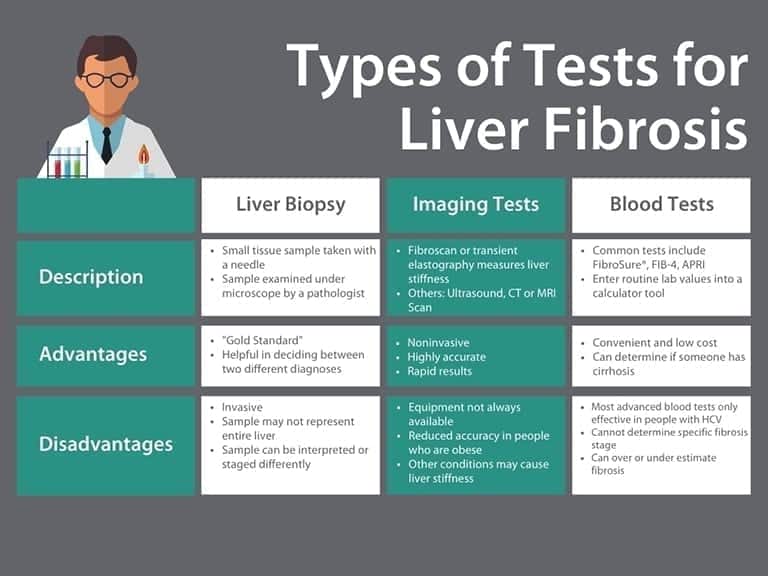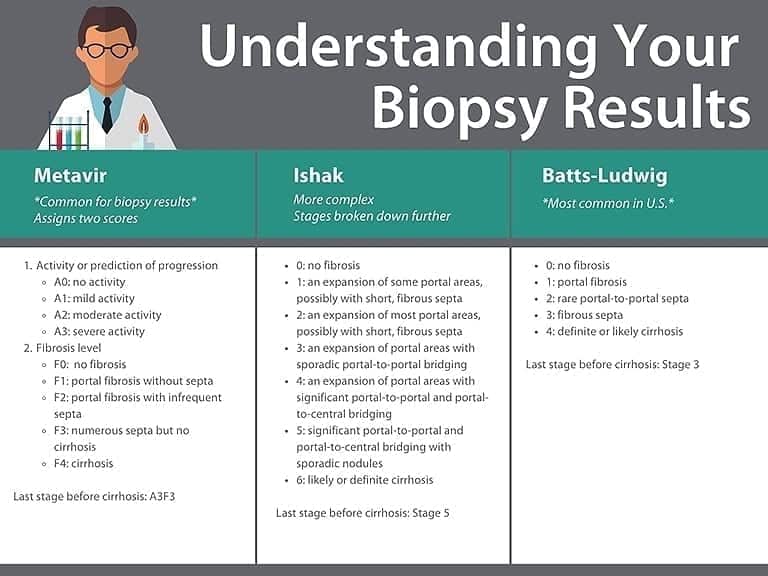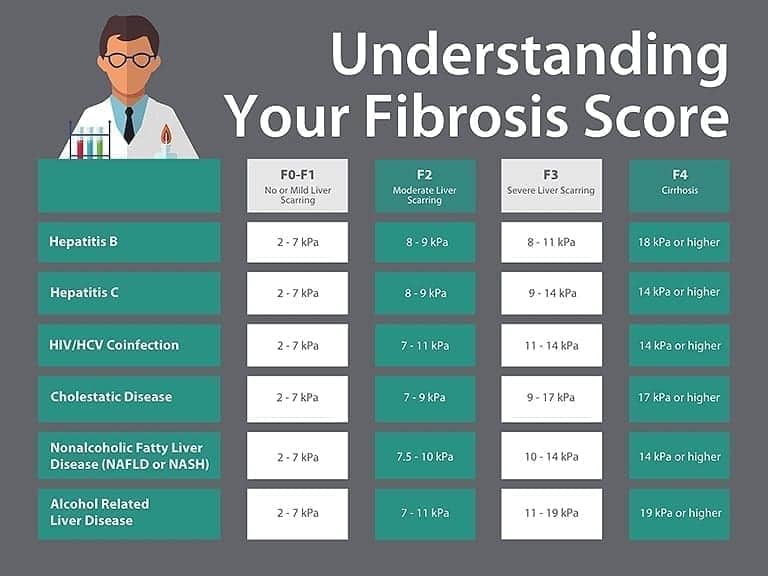Fibrosis (Scarring)
How Fibrosis Develops

When someone has liver disease, their liver enters into a very dangerous cycle. Persistent inflammation, or hepatitis, sends nonstop signals to repair cells to continue depositing collagen. The extra collagen stiffens around the tissue like it is supposed to in the healthy liver; but, instead of a signal being released to stop the inflammation and discard the extra collagen, the inflammation continues, and even more collagen is deposited, leading to more stiffening. This is how fibrosis develops.
When repetitive damage or long-lasting inflammation occurs, collagen and other proteins build-up between liver cells, forming scar tissue. Scar tissue can block or limit blood flow within the liver, starving and killing healthy liver cells, causing more scar tissue to form. Unlike healthy liver cells, scar tissue cannot function or repair itself. As fibrosis advances it can impact the liver’s ability to function, limit its ability repair itself and restrict blood flow. Over time, the scars in the liver will continue to build and replace healthy tissue. Gradually, the scars snake out farther, covering more of the healthy liver and grow together, or bridge, creating septa or bands of scar tissue. Fibrosis also restricts blood flow. When doctors want to determine how severe the scarring is, they examine the impact on the portal blood flow. The portal vein brings all the blood from the intestines to the liver to be processed.
Fibrosis in mild to moderate stages often does not cause symptoms. Due to a lack of symptoms, many people live with liver damage, or fibrosis, without being diagnosed until they have symptoms of cirrhosis. Fibrosis can be reversed if detected early enough and the underlying liver disease that caused the development of fibrosis can be cured or treated. If fibrosis is left untreated, it can lead to cirrhosis and liver cancer. It is important to remember that the process of fibrosis progressing to cirrhosis happens over a long period of time. The time it takes for fibrosis to progress is different for every disease and every person. Not everyone who develops fibrosis will progress to cirrhosis. Not everyone who gets cirrhosis will get cancer.
Testing Options

Until recently, liver biopsy was the only way doctors could determine the stage and degree of liver damage. Today, there are both blood and imaging tests that can determine liver damage. This is a brief overview of different types of tests your doctor may discuss with you.
Understanding Liver Biopsy Results

Understanding the results of these different tests can be a challenge. Healthcare providers use different scales to define the stages of liver damage. Different scales are used when a biopsy is done versus an imaging test, like a FibroScan®.
Common scales used to grade a liver biopsy are explained here. Most scoring systems examine the impact of fibrosis on the portal vein (which brings blood from the intestines) and the location and number of septa (connecting bands of scars).
If you have cirrhosis or are in the final stage before cirrhosis, please speak with your doctor about liver cancer screenings.
Understanding your CAP Score

A FibroScan® is a special ultrasound for your liver. This imaging test is not invasive. By measuring the stiffness of the liver your doctor can detect both scarring and fatty change in the liver. Here, we have explained the information you may receive from your doctor if you have a FibroScan®.
Your CAP score is a measurement of fatty change in your liver. Fatty change (steatosis) is when fat builds up in your liver cells. This fat can impact your liver’s ability to function. Your doctor will use your CAP score to grade how much fatty change has happened in the liver. A CAP score is measured in decibels per meter (dB/m) and ranges from 100 to 400 dB/m. The table here shows ranges of CAP scores, the matching steatosis grade, and the amount of liver with fatty change.
Reliability of Test Scores

This table shows liver diseases, ranges of fibrosis results, and the matching fibrosis score. The ranges of fibrosis results in the table are estimates. Your actual fibrosis score may not match the fibrosis score in the table. If you have more than one liver disease you may not be able to use this table. Your fibrosis result may be overestimated if you have liver inflammation caused by recent illness or drinking alcohol, benign or cancerous tumors in your liver, or liver congestion (when liver is too full of blood or other fluids). Your FibroScan® results may also be less accurate if you are obese, have ascites, or have too little bile flowing out of the liver.
Last updated on September 6th, 2023 at 04:10 pm